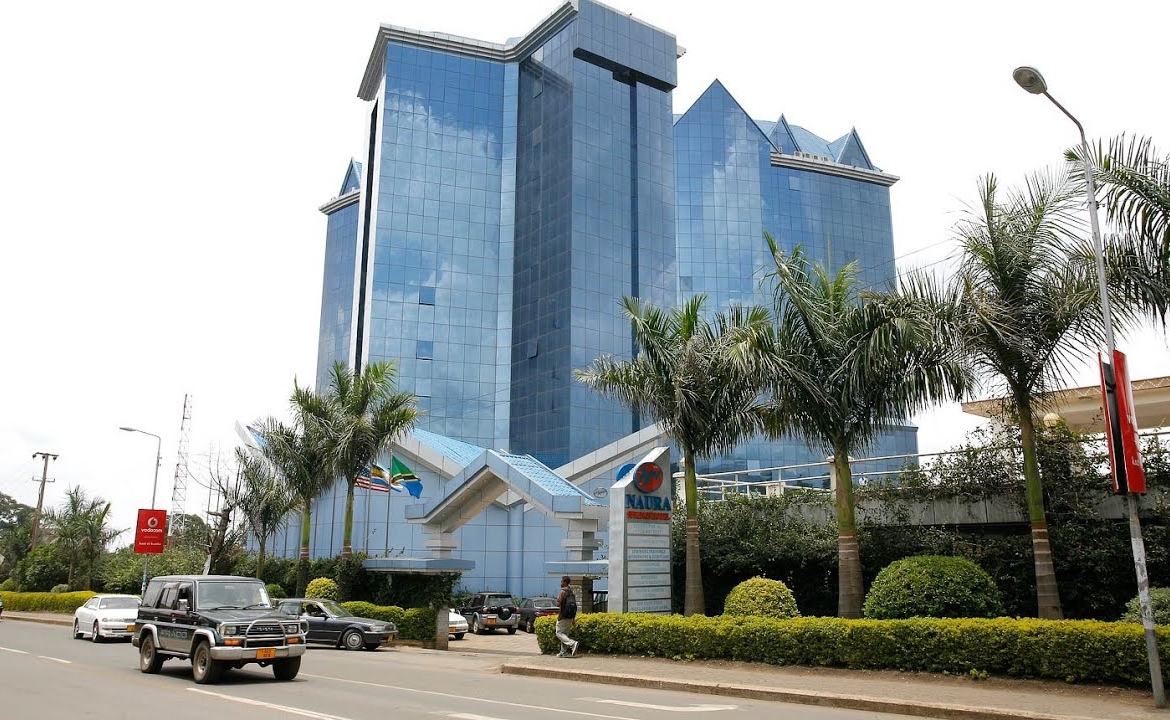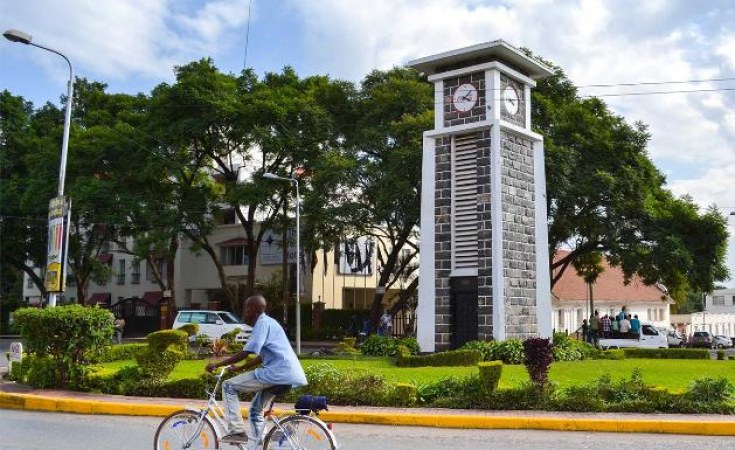Arusha City : The city is adjacent to the Serengeti National Park, the Ngorongoro Conservation Area, Lake Manyara National Park, Olduvai Gorge, Tarangire National Park, Mount Kilimanjaro, and Mount Meru in the Arusha National Park, and is consequently considered the safari capital of Tanzania and the globe. Guests on the famed northern safari circuit all make a pit stop in the “Geneva of Africa” to prepare for their adventures in the African bush.

The colonial administration maintained a tiny German military garrison in 1900. Arusha was a peaceful town, with a garrison stationed at the old boma and a few stores clustered around a grassy roundabout. From its backwater status amidst the farmlands and plantations of northern Tanzania, Arusha is now one of the country’s wealthiest towns, with a population of 416,442 plus 323,198 in the neighboring Arusha Rural District (2012 census).
Arusha is a significant international diplomatic center. It serves as the home of the East African Community. The International Criminal Tribunal for Rwanda was based in the city from 1994 to 2015, but it no longer exists. It is a multicultural city with a majority of Tanzanians of various ancestries, including indigenous Bantu, Arab-Tanzanian, and Indian-Tanzanian populations, as well as a tiny white European and white American minority. The Christian, Jewish, Muslim, and Hindu religions are practiced by the people of Arusha.
ARUSHA CLIMATE
Arusha’s elevation of 1,400 meters (4,600 feet) on the southern slopes of Mount Meru, despite its proximity to the equator, keeps temperatures mild and humidity at bay. For the majority of the year, cool, dry air prevails. Arusha’s temperatures range from 13 to 30 degrees Celsius and the average temperature is about 25 degrees Celsius.
ARUSHA ECONOMY
Agriculture and tourism are Arusha’s two main sources of industry and economy. Vegetables, flowers, and coffee are the most important agricultural products in Arusha. A brewery, a fiberboard and Tyre Company, and a huge pharmaceutical manufacturer are among the most well-known factories. In Arusha, mining is also quite popular. Tanzanite, a gem-quality mineral, is only found in the city. The East African Community, the International Criminal Tribunal for Rwanda, and the African Court on Human and People’s Rights are among the most prominent economic locations.

ARUSHA CULTURE
Arusha is a diversified city with people from many walks of life. There are indigenous tribes in the area, as well as Tanzanians of mixed ancestry (Arab, Swahili, and Indian ancestry) and a sizable European presence. The city is home to the National Natural History Museum, which houses three exhibitions on early man, regional plants and animals, and the city’s history. In the early 1900s, the Natural History Museum, which is housed in a “boma,” served as a German administration outpost. It was established in 1987 as a public museum and houses important scientific assets such as Australopithecus people models and human ancestors who lived over 2 million years ago.
A modest museum close to the Uhuru monument houses information on the 1967 Arusha Declaration events. Arusha is also a culturally significant city in Tanzania. Up to half a million people visit Nane Nane. It hosts a variety of events, including the yearly Arusha Nane Nane Agricultural Show. On August 8th, Tanzanians celebrate Nane Nane, a national holiday. Nane Nane is a Swahili word that means “eight eight,” referring to the feast that falls on the eighth day of the eighth month. The exhibition, which attracts up to half a million visitors each year, is crucial for local farmers and stakeholders because it allows them to share their knowledge and commercial opportunities.
HOW TO GET TO ARUSHA
A car or the more expedient air transport can be used to reach Arusha. If you opt to travel by air, you can arrive at Dar es Salaam’s Julius Nyerere International Airport and then take a flight directly to Kilimanjaro International Airport. There are also direct flights from other nations, notably Kenya Maasai Mara, Kampala Uganda and almost all countries to Kilimanjaro International Airport.
Arusha has a second airport, Arusha Municipal Airport, which is approximately 46 kilometers away from Kilimanjaro Airport. This airport is primarily used for domestic flights. You can either hire a cab to take you to the town center or wait for your tour operator to pick you up after arriving at either of the two airports.
Those who prefer to go by bus can take a bus from Nairobi (which takes 6 hours), Dar es Salaam (12 hours), or Kampala (which takes 12 hours). Even if the excursions by road are long, nature lovers and keen observers will be rewarded with breathtaking views of the African landscape.
GETTING AROUND ARUSHA CITY
Locals call a minibus “dala dala” or a motorcycle “boda boda” the most popular mode of transportation within the city. They are a relatively inexpensive mode of transportation that can take you anywhere in the city, albeit the boda boda is somewhat more expensive than the dala dala and also faster. They are always crowded with average Tanzanians, giving you the opportunity to socialize and experience life as a Tanzanian. A cab can also be hired at a slightly higher price.
ARUSHA TOURISM
Tourism is also a significant element of the economy of Arusha and Tanzania’s largest dollar-earning economic sector. The city lies near some of Africa’s best national parks and game reserves, including the Serengeti National Park, Kilimanjaro National Park, Ngorongoro Conservation Area, Arusha National Park, Lake Manyara National Park, and Tarangire National Park.
ARUSHA ATTRACTIONS AND THINGS TO DO
Most people think of Arusha as Tanzania’s safari hub or a place to halt on their way to hike Mt. Kilimanjaro. However, just because it has its own unique features, this East African city should not be ignored as a tourist destination. Tourism activities at Arusha include the following:
- Meserani Snake Park is a place where you can see snakes.
Meserani Snake Park allows visitors to hold wild tortoises and get up close and personal with dozens of slithering snakes. Meserani Snake Park is home to poisonous black mambas, spitting cobras, and the spectacular African python, as well as monitor lizards, crocodiles, and other reptiles. Visitors can walk around the grounds, look at the displays, and even visit a neighboring clinic that gives free medical care to the Maasai.

- Visiting the Cultural Heritage Centre
If you’re looking for the best jewelry and valuable stones like tanzanite, head to the Cultural Heritage Centre on the city’s outskirts. Through antiques and art, the centre tries to represent the culture of Tanzania’s various Tanzania tribes. In addition, the Arusha Cultural Heritage Centre offers some of the best art galleries, ornamental antiques, sculptures, artifacts, paintings, jewelry, African fabrics, and souvenir shops.
- Visiting the Farmers’ Market
Every year on August 8th, the farmers’ market opens (also known as “Nane Nane Day”). This market day honors the value of agriculture and the contribution of farmers to the county’s economy. Visitors, students, and businesspeople interested in learning about Tanzania’s food processing industry should go to the Farmers’ Market. You’ll meet seasoned farmers ready to share their achievements and challenges with you. The most cutting-edge agricultural innovations are on show. You can buy some of the items or watch locals sell their cattle, goats, and local art pieces at these Tanzania special events.
- Visiting the Arusha Declaration Museum
This museum, which is nearly 40 years old, was established to commemorate the 1967 Arusha Declaration. While developing the Arusha Declaration document, which suggested a new government policy of self-reliance and socialism, the TANU executive committee met at the Museum. You will be able to learn events that shaped Tanzania’s current political system and governance systems with you while you’re at the museum. Every May, International Museum Day is celebrated.
- Visiting the Uhuru Torch monument
The monument, also known as Mwenge wa Uhuru (Torch of Freedom in Swahili), is one of the country’s national emblems. Alexandra Nyirenda ignited it for the first time in 1961 at Arusha Attractions, and it represents light and freedom. The monument is a symbol of hope in the face of adversity, of love where there is hostility, and of respect when there is animosity. Tanzanians and visitors from all over the world assemble once a year to witness the lighting of the Uhuru Torch.
- Visiting the Clock Tower
This tower was formerly thought to be built between Cape Town, South Africa, and Cairo, Egypt, to mark the former British Empire’s midpoint on the African continent. This has since been disproved, as the true halfway point between the two cities is now recognized to be in Central Congo.

WHERE TO STAY IN ARUSHA CITY-ACCOMMODATIONS IN ARUSHA CITY
Arusha, which welcomes a large number of international tourists each year, does not have a shortage of high-quality lodging. The type of lodging is solely determined by one’s financial situation. Ultra-luxury, luxury, mid-range, and budget accommodations are all available. You may reserve hotels near national parks or the nearby Ngorongoro crater if you want to stay outside of the city and enjoy views of the wildlife. Accommodations in or near the national parks are more expensive than those in or near the city. The top five best places to stay in Arusha city are listed below.
- Arusha Gran Melia
- Lake Duluti lodge.
- Mount Meru hotel
- Venus Premier Hotel & Spa
- Kibo Palace hotel.
- Arusha Elewana Coffee Lodge


